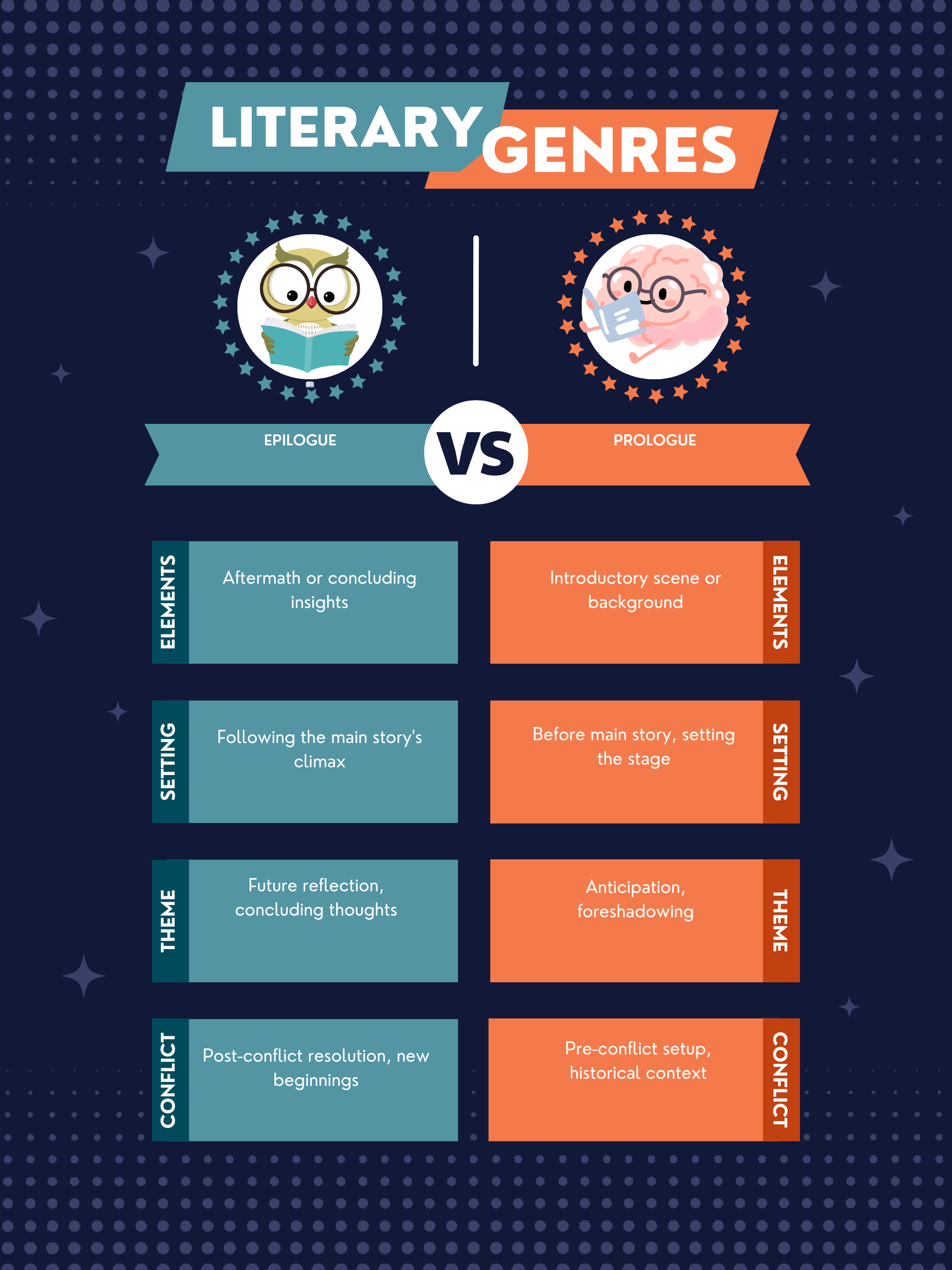An Epilogue is a section at the end of a book that concludes the story, possibly extending beyond the narrative; A Prologue is an introductory section of a book that might provide background information or set the stage for the story to come.
Epilogue
The Epilogue serves as a final chapter that can provide closure, reveal the fates of characters, or tie up loose ends after the primary narrative has concluded. It’s a powerful tool for extending the story beyond its climax, offering readers a glimpse into the future or the broader impact of the story’s events.
Example: In J.K. Rowling’s Harry Potter and the Deathly Hallows, the epilogue, titled “Nineteen Years Later,” provides a satisfying conclusion by showing the main characters as adults, sending their own children off to Hogwarts.
Prologue
A Prologue is used to set the scene for the reader, offer background information, or provide a narrative hook to intrigue the audience before the first chapter begins. It can be set in a time before the main story, offer a different perspective, or contain key information that adds depth to the upcoming narrative.
Example: In Romeo and Juliet by William Shakespeare, the prologue is a sonnet that outlines the entire plot, setting up the tragic tale of the two star-crossed lovers from feuding families.
Summary
| Literary Device | Definition | Purpose | Usage | Relevant Examples |
|---|---|---|---|---|
| Epilogue | A section at the end of a book that concludes or extends the story. | To provide closure, reveal future outcomes, or tie up loose ends. | Often used in novels to satisfy readers’ curiosity about characters’ futures. | J.K. Rowling’s Harry Potter and the Deathly Hallows. |
| Prologue | An introductory section of a book that sets the stage for the story. | To offer background information, set the tone, or intrigue the reader. | Common in novels that require historical context or a setup before the main action. | William Shakespeare’s Romeo and Juliet. |
Writing Tips
For writers looking to enhance their stories with an Epilogue or Prologue, consider the following:
- Epilogue: Think about what questions readers might have at the end of your story. Use the epilogue to address these queries, ensuring a satisfying resolution. Be mindful of not overloading it with unnecessary details—keep it concise and impactful.
- Prologue: Use the prologue to grab the reader’s attention from the very beginning. Whether it’s a dramatic scene, a mysterious background story, or a captivating character introduction, ensure it’s directly relevant to the main narrative and enriches the reader’s understanding.
FAQs
When should I include an Epilogue or Prologue in my writing?
Include an Epilogue when you want to offer readers a peek into the future of your characters or world. A Prologue is useful when background information or context is necessary to fully appreciate the story.
Can a book have both an Epilogue and a Prologue?
Absolutely! If the story benefits from both a setup before the main narrative begins and additional closure at the end, then using both devices can enrich the reader’s experience.
Do all books need an Epilogue or Prologue?
No, not all books require them. Whether to include them depends on the story’s needs and whether these elements will enhance the narrative.
Exercise
Identify whether the following scenarios are more suited to an Epilogue or a Prologue:
- A brief account of the historical events leading up to the story’s present-day setting.
- A scene showing the main characters ten years after the story’s climax, reflecting on the events that changed their lives.
Answers:
- Prologue.
- Epilogue.
Other Device Comparisons You May Find Interesting
- Flashback vs Foreshadowing: Explore how these devices manipulate time to enhance the narrative.
- First Person vs Third Person Narration: Delve into the perspectives that shape how a story is told.
- Static vs Dynamic Characters: Understand the differences between characters who undergo significant development and those who do not.
- Theme vs Motif: Discover how these literary elements subtly contribute to the depth of a story.
This comparison aims to enlighten and inspire, offering a clearer understanding of the Epilogue and Prologue’s unique contributions to the art of storytelling. 📚🌟

